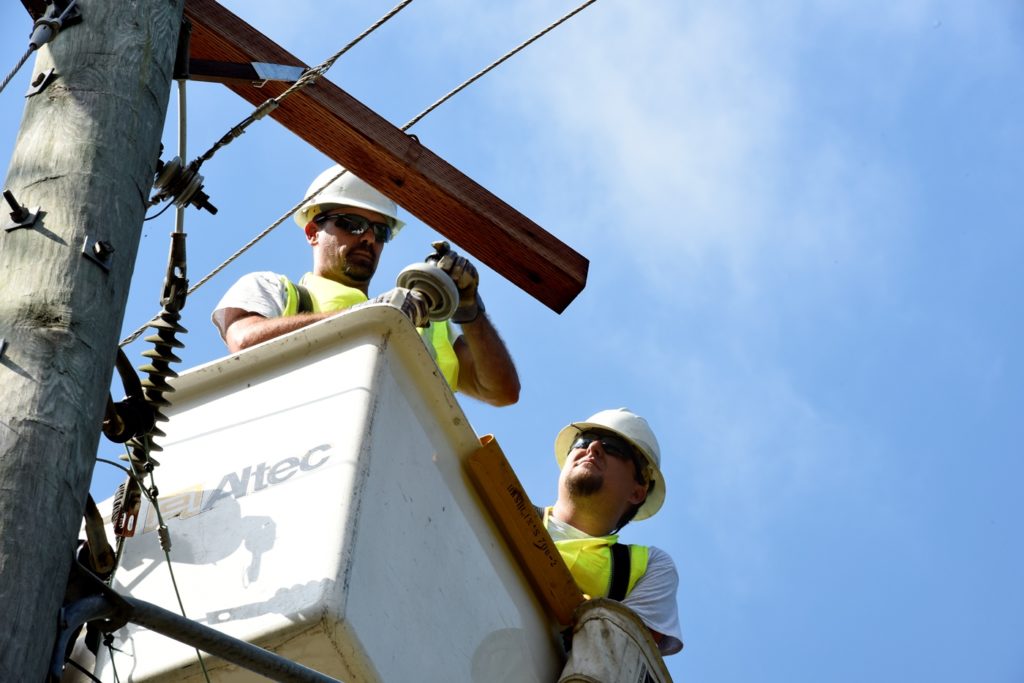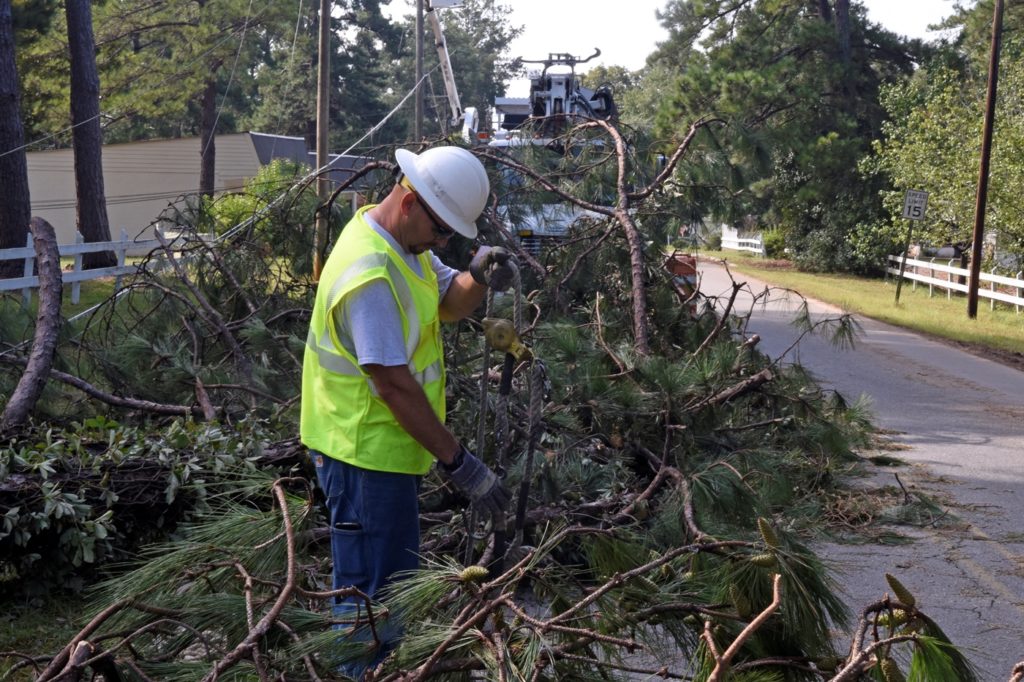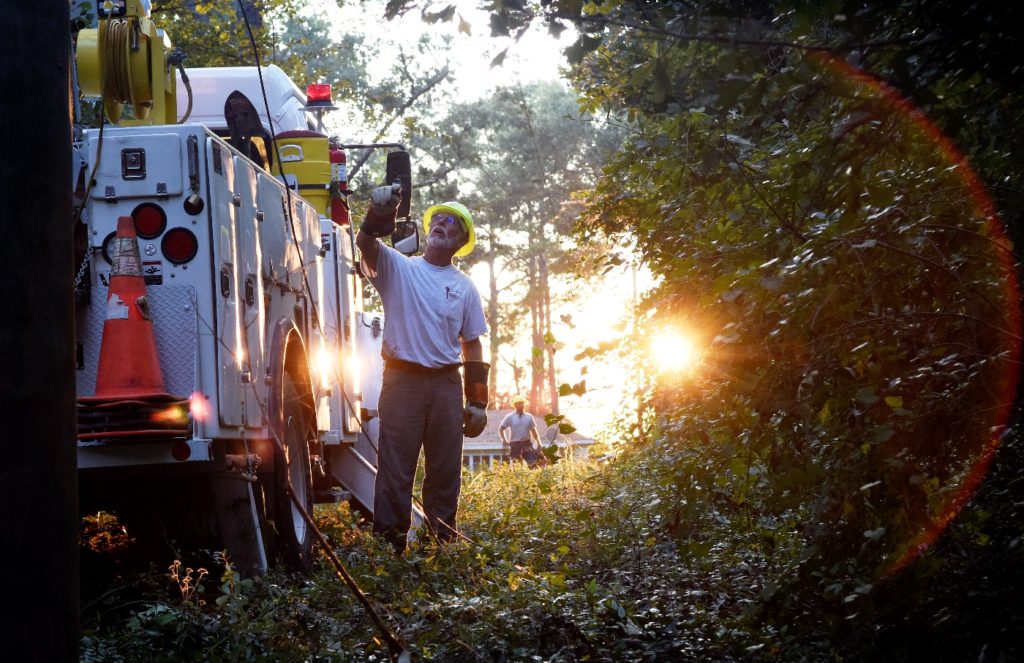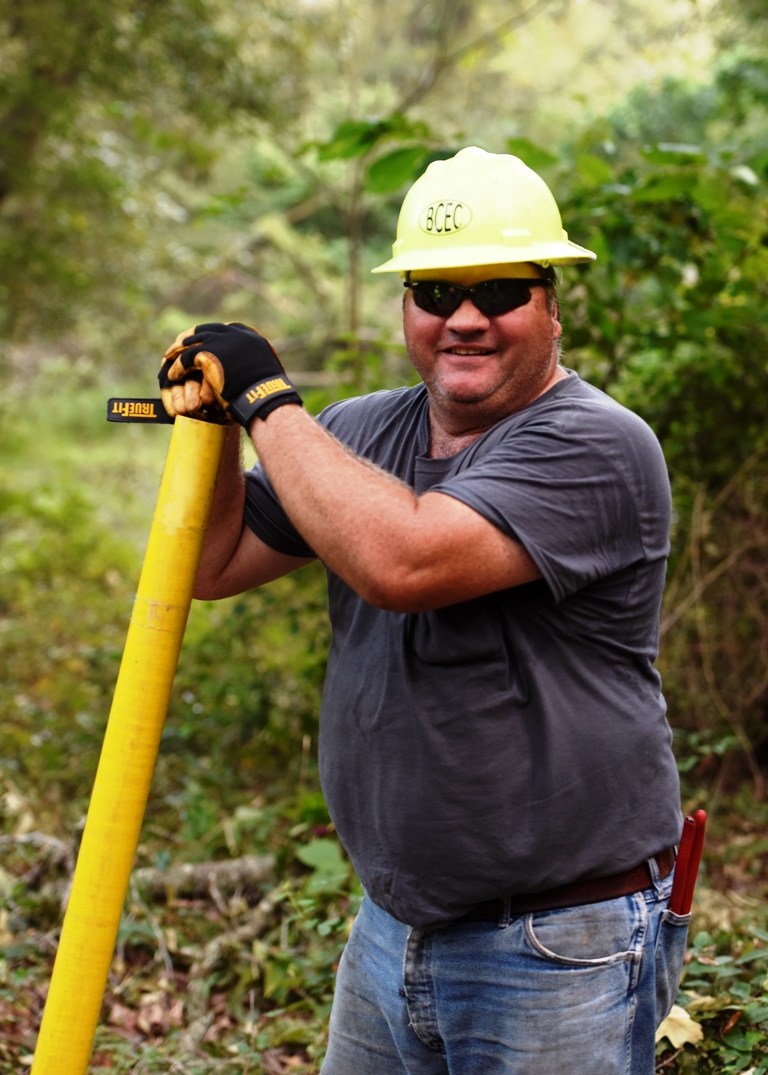
With the help of mutual aid crews and contractors, Georgia co-ops brought back power to more than 550,000 meters less than six days after Hurricane Irma walloped every corner of the state.
Terri Statham, manager of media relations for Georgia Electric Membership Corporation, said more than 4,500 linemen from Georgia and 15 other states participated in the massive effort. “Crews came from as far north as Pennsylvania, New Jersey, Michigan and Wisconsin, and as far west as Texas and Oklahoma,” she said.
Statham said outages had been reduced to less than 5,600 by late Sept. 16, with some work remaining in hard-to-get-to areas.
Sustained gale force winds exceeding 60 mph rattled many co-op-served communities for hours on Sept. 10-11, shredding power lines and bring towering pines crashing into rights of way.
Some co-ops experienced damage to as much as 90 percent of their service area, the statewide association said in a statement. Crews had to cut their way into many areas before repairs begin. “Workers have been replacing record numbers of broken power poles,” said Statham. “Pole replacements are notoriously time- and labor-intensive—one pole replacement can take as much as four hours.”
Strength in Numbers

“This was an ‘all hands on deck’ event because we had to get it done,” said Greg Hill, a line crew leader with Flint Energies. The Reynolds, Georgia-based co-op reported 31,000 of its meters out by nightfall Sept. 11.
“Irma was an epic storm,” added Marian McLemore, the co-op’s vice president of cooperative communications. “It took Flint 80 years to build our 17-county electric system and took just 24 hours of storm conditions to destroy 35 percent of it.”
Repair work even as pelting storms continued across parts of the state.
“It came a long ways inland,” Jeff Dimond, a line crew foreman with Barton County Electric Cooperative, said of the storm. During his career with the Lamar, Missouri, co-op, Dimond has worked mutual aid following four hurricanes. He said he did not see this as the worst of the lot, but was challenged by working woodland restoration.

“When you’ve got that many pine trees, and when you get a lot of wind, you are going to end up with quite a bit of damage,” he said.
Vegetation management crews moved ahead of line crews to clear some of the worst damage, followed by staking crews that set locations for replacement poles vital to restoring distribution systems.
“There are still a lot of services pulled off of houses where people will have to do repairs,” said Bobby Payne, a senior staking technician with Flint Energies. “While there are still trees on some houses, the damage to homes in our service territory was not as bad I expected it to be.”
Flint Energies’ territory has been hit by tropical storms, tornadoes and ice storms, but Irma’s impact was significantly more widespread because of the winds, Payne said.
“There was so much damage statewide that other Georgia co-ops kept their own crews close to home,” said Heath Wilson, Flint Energies’ supervisor of contract construction. “We could not have gotten our numbers down without a lot of out-of-state help.”
Determined Resolve

After working long hours near Warner Robins, Georgia, hungry crews from Barton Electric Cooperative and Laclede Electric Cooperative in Lebanon, Missouri, were shown real appreciation at a local restaurant Sept. 13.
“A lady came up to them and thanked them profusely for their work,” said Jim McCarty, editor of Rural Missouri magazine, who has been traveling with crews from his state. “When she left the manager came over and told them she bought supper for all of them. [It was] $400-plus, counting tip.”
A crew from Ralls County Electric Cooperative in New London, Missouri, found a farmer sitting atop his idling tractor when they showed up to work outages near Montezuma, Georgia.
“His John Deere tractor was equipped with a front end loader,” said McCarty. “He moved most of the trees out of the way, cut hours off the restoration time for this outage. Two hours of work got 10 members on.”
Heartwarming stories, cheers, cupcakes, cookies and hugs have been common among co-op members glad to see power restored.
“I can tell you exactly when we lost power. It was Monday morning at 10 o’clock,” said Bob Smith, an Air Force retiree and Flint Energies member from Bonaire, Georgia.
Smith told crews the power outage caused him to miss his favorite shows on Netflix, but he found other amusements to pass the time as he waited for power to be restored, which it was on Sept. 14.
“Sudoku. In fact, I just posted on Facebook that I am doing Sudoku by flashlight.”
Derrill Holly is a staff writer at NRECA.